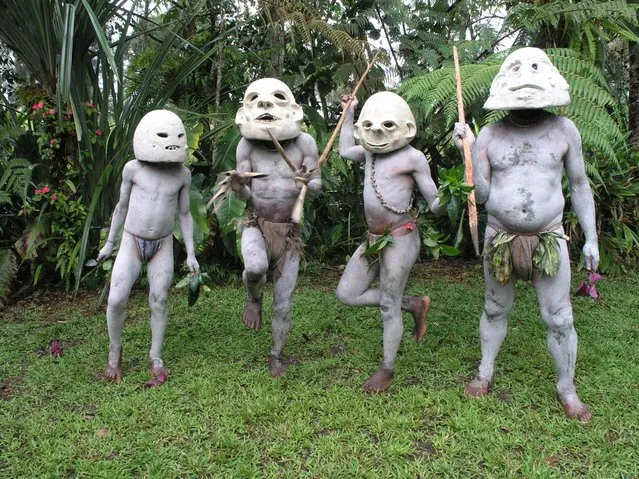
Papua New Guinea is a land of Wig-Schools, Wig-Teachers and WigMen, impenetrable rain-forests, sweet potatoes and pigs. A land of the Cus-Cus, the Cassowary and thirty-eight species of Birds of Paradise. A land without sheep, goats, cows or milk. A land where there are no donkeys, horses or mules. No bicycles, mopeds and few cars; virtually no restaurants, bars, shops, electricity or roads. It is a land where there is no recreational s*x, where a new-born girl is called a Shovel, a boy an Axe and where many adults have no birth certificates. It is perhaps one of the most untouched lands on earth. This bizarre way of life is found in the Highlands of Papua New Guinea, a country comprising more than 2000 indigeneous clans, including the Mudmen of the Waghi Valley. To find this clan, you need to travel to the Highlands town of Mt Hagen. Although it’s the third largest town in the country it has a reputation of being “the wild frontier” of the Highlands and more often is referred to as simply Hagen, a German name that acknowledges the presence of Lutheran missionaries who settled in the area almost a century ago. Compared with the intense heat and humidity of the coastal region, Hagen has a comfortable alpine climate and though it rains an average of 3800mm a year, there are few mosquitoes and consequently no malaria. Throughout Papua New Guinea, language is an issue. More than 800 different languages are spoken, 12% of the world’s indigeneous languages, and very often adjoining clans are unable to understand the language spoken by their neighbours just a few kilometres away. Some of these languages are spoken by just 5000. For centuries the Highlands peoples of Papua New Guinea fought over land, women and pigs. Sorcery and battle skills could elevate a clan to Bigmanship, where the bigger the “presentation”, the bigger the man. Clans therefore would paint their bodies and create fearsome masks as part of their psy. Here: These are the terrifying tribe of “mudmen” from a remote part of Papua New Guinea. (Photo by Jeremy Hunter/Exclusivepix Media)
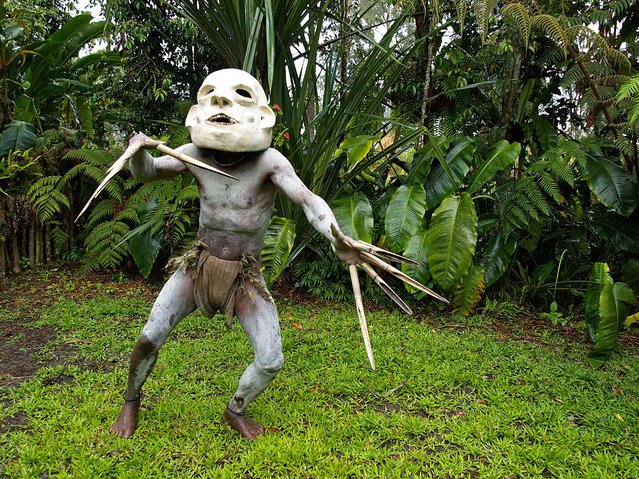
The mudmen come from the country’s western highlands, where there are virtually no roads, cars, electricity or shops. (Photo by Jeremy Hunter/Exclusivepix Media)
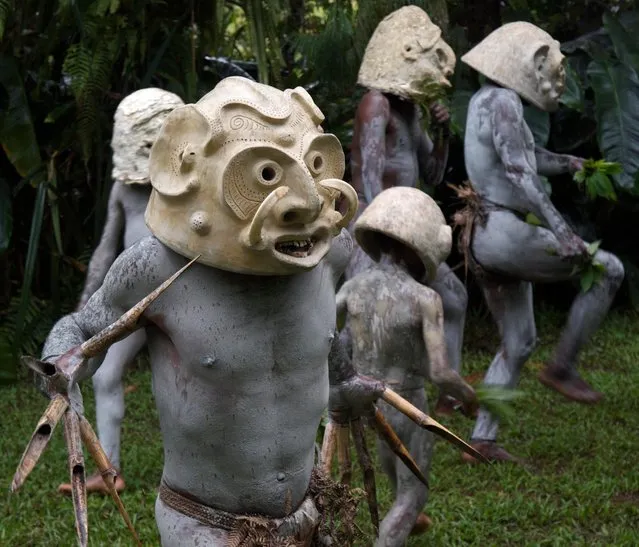
Warring clans in the region would paint their bodies and create fearsome masks to frighten their enemies. (Photo by Jeremy Hunter/Exclusivepix Media)
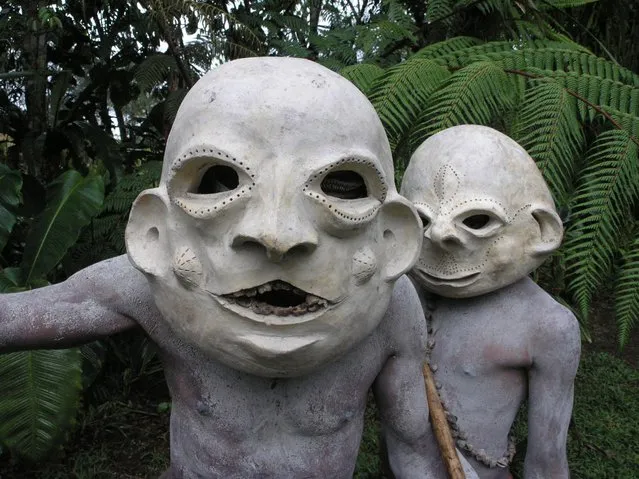
The mudmen wear terrifying masks of clay and coat their bodies in thick grey mud. (Photo by Jeremy Hunter/Exclusivepix Media)
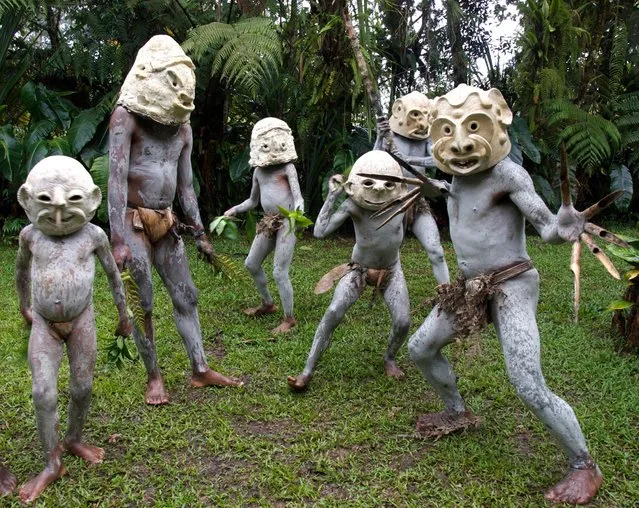
Legend has it the mudmen were forced to hide in a river after being attacked by another tribe centuries ago. (Photo by Jeremy Hunter/Exclusivepix Media)
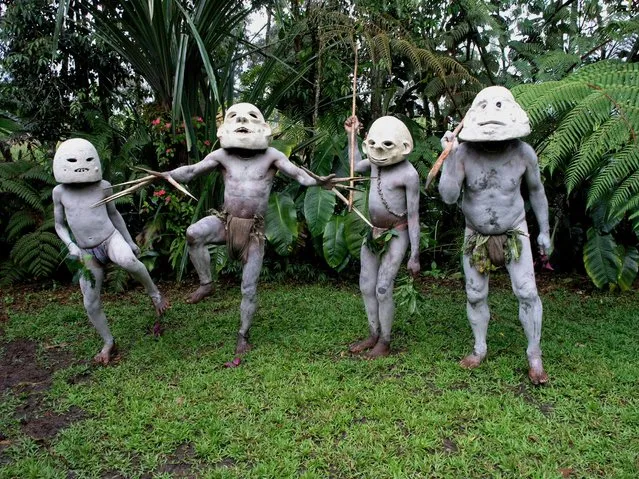
The tribe are said to have emerged from their hiding place covered in clay, terrifying their enemies. (Photo by Jeremy Hunter/Exclusivepix Media)
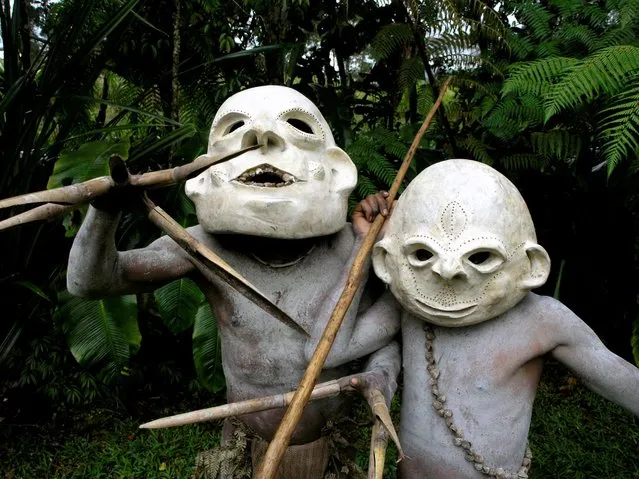
The leader of the group of mudmen is seen with one of the younger clan members. (Photo by Jeremy Hunter/Exclusivepix Media)
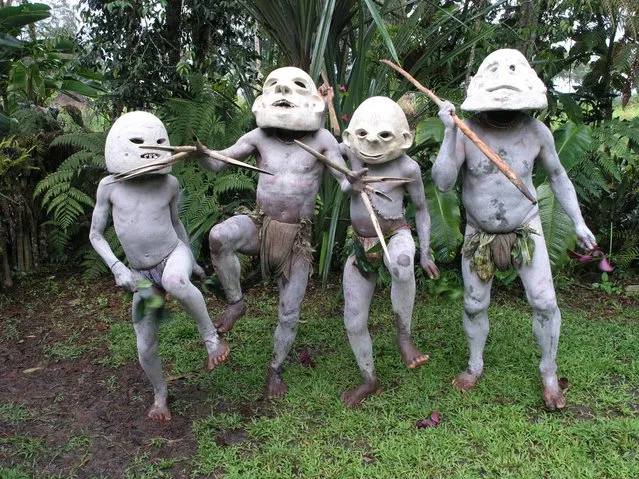
According to the story, the tribe’s enemies fled in fear, believing them to be evil spirits. (Photo by Jeremy Hunter/Exclusivepix Media)
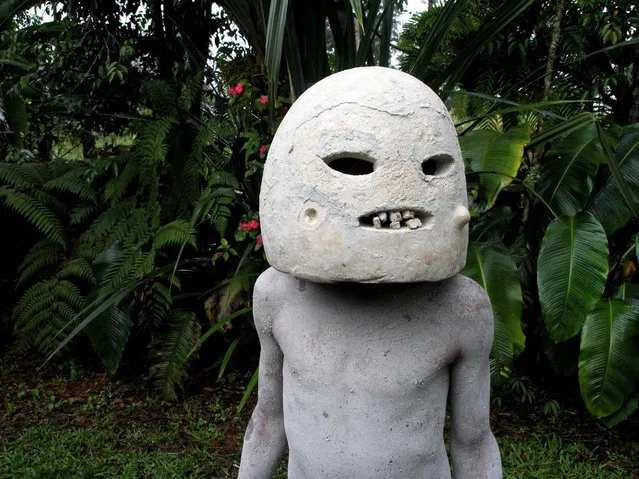
The mudmen would terrorise the villages of other tribes, dressing up before attacking them. (Photo by Jeremy Hunter/Exclusivepix Media)
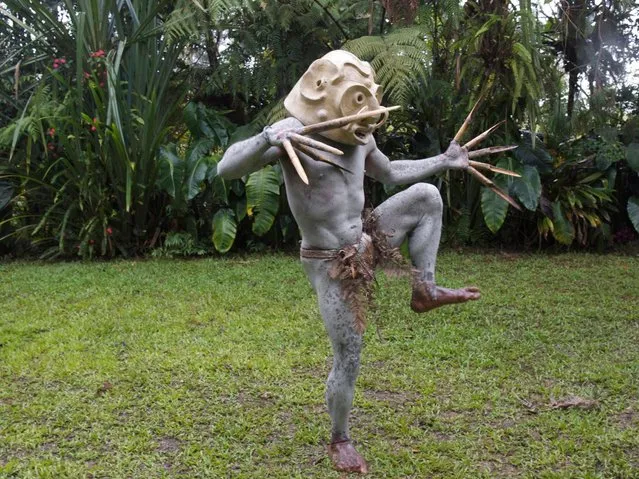
The leader of the group wears long bamboo claws on his fingers. (Photo by Jeremy Hunter/Exclusivepix Media)
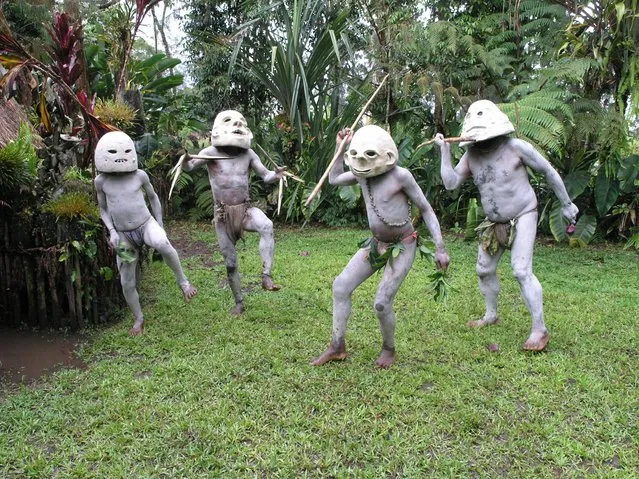
Other members of the fearsome warrior clan carry bamboo spears. (Photo by Jeremy Hunter/Exclusivepix Media)
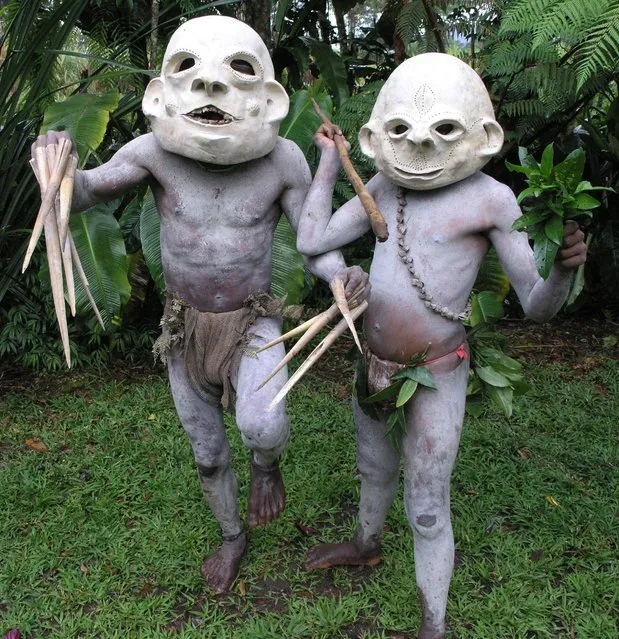
Reporters tracked down the clan in Papua New Guinea to photograph them. (Photo by Jeremy Hunter/Exclusivepix Media)
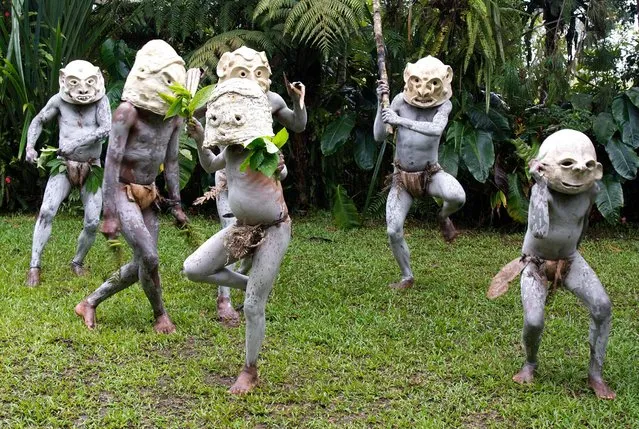
The clan agreed to show journalists how they would terrify their enemies in battle. (Photo by Jeremy Hunter/Exclusivepix Media)
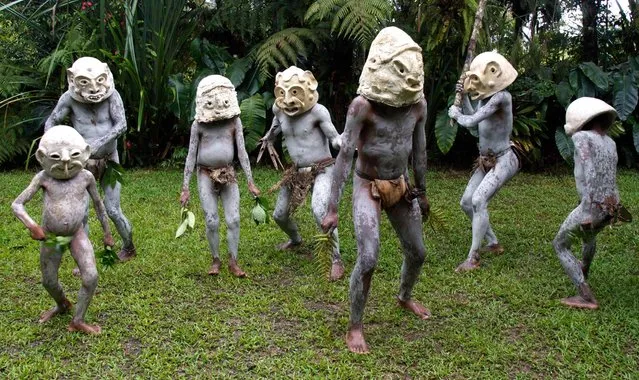
The mudmen, naked apart from a leaf covering their genitals, put on a fearsome display. (Photo by Jeremy Hunter/Exclusivepix Media)
08 May 2017 08:12:00,
post received
0 comments
